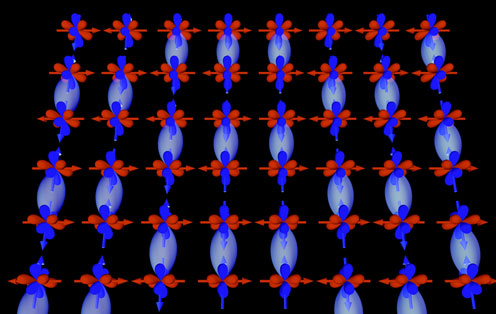
This illustration is based on a theoretical understanding of microscope-based measurements carried out by Cornell Univrsity. It shows a 2-dimensional iron-layer. The lattice seen here rougly measures 10/1.000.000 of 1 millimeter on each side. The red and darkblue clover-like structures represent two diffent iron electrons – each individually expressed (orbital state). In order to arrive at superconductivity the electrons must form groups of two (Cooper pairing) – symbolized by the light blue ‘eclipses’. They are superconductive – while the red do not form Cooper pairs because they predominantly contribute to the upholding of magnetism in the entire system. The scientific article from Niels Bohr Institute, Cornell University, University of St. Andrews et.al...






Recent Comments